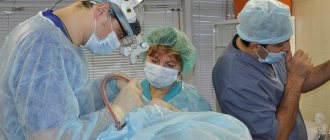The beauty of the female figure is associated with the smooth curves of the body. However, not all women have a thin, hourglass-shaped waist. From the 16th to the 18th centuries, women fought this problem with the help of corsets. The first products resembled instruments of torture, since they included metal elements in their design. They tightened the lower part of the chest so much that over time the bone tissue became distorted, deformities developed, and internal organs were displaced. Today, many women achieve a slender, thin waist by removing ribs.
What does a person need ribs for?
Ribs are flattened, curved plates of bone and cartilage. There are 12 pairs of them. What are they needed for? These elements form the anterior part of the chest, which protects the internal organs from mechanical damage and injury. They connect to the thoracic vertebrae.
Another important function is support. The sternum gives strength to the spine, keeps the internal organs in an optimal position and prevents their displacement. It also serves as a framework for muscles and takes part in breathing. The mass and rigidity of the bone elements helps the lungs contract and push air out.
The bottom 3 ribs are called false. Their function is almost not expressed. They reduce the likelihood of injury to organs located in this area.
Indications for rib removal
Previously, surgery to remove ribs was performed for various pathologies: osteomyelitis (purulent-necrotic process in the bone), tumors. Resection of 1 or a pair of ribs is sometimes necessary when revising the chest cavity after penetrating wounds. Removal may also be necessary if bone grafting is needed to another part of the body.
The operation is indicated for scoliosis, which is accompanied by severe deformation of the sternum and the formation of a rib hump. In the latter case, surgery reduces the vital capacity of the chest cavity and must be performed with caution.
Removal of ribs during lung surgery
There are situations and pathological conditions in which resection cannot be avoided. In medical practice, cases of rib removal are known:
- with empyema (accumulation of pus) of the pleura;
- lung development abnormalities;
- malignant formations.
Resection is a traumatic procedure and the patient will require a long rehabilitation period, taking analgesics and antibacterial medications. If after six months the surgeon notes a positive trend towards recovery, then physical therapy is prescribed for complete tissue healing.
Removal of ribs for tuberculosis
Thoracoplasty (that's what surgery to remove the ribs is called) is done to reduce the breastbone in some forms of pulmonary tuberculosis. The main indication for the procedure is fibrous-cavernous unilateral tuberculosis with persistent stabilization of the process.
Surgical intervention is also indicated for repeated bleeding from the lungs, when it is not possible to perform resection or apply an artificial pneumothorax. In disseminated forms of tuberculosis, bronchial stenosis, and the presence of large cavities, thoracoplasty is not performed.
Removal of ribs during surgery is not always prescribed. In some cases, this is a necessary measure in surgery, when the bone tissue of the sternum blocks access to the affected part of the organ and does not make it possible to visualize the source of the inflammatory process or remove the tumor.
Removing ribs for a thin waist
Nowadays the operation is also performed with the aim of obtaining an aesthetic result. If a woman makes a lot of efforts to correct the shape of her figure, but they are in vain or simply wants to reduce its volume, then plastic surgeons will not refuse to perform surgery to remove a rib for the waist (provided there are no contraindications). Surgery is indicated if:
- when the results of liposuction did not live up to expectations;
- dietary restrictions and physical activity were powerless to correct the problem area;
- the patient has a rectangular build;
- a person has changed gender and wants to change his waistline.
Plastic surgery - how ribs are removed. What is the price. Photo. Video
A person who decides to undergo surgery to remove ribs must first consult with a plastic surgeon and therapist, as well as pass all the necessary tests.
How ribs are removed. Scheme
The patient must be absolutely healthy, which means it is necessary to cure all existing diseases, such as herpes, ARVI, caries and other ailments. One month before surgery, you should stop smoking and drinking alcohol, as well as blood thinners if you have taken them before. These include Heparin, Warfarin, Curantil, Escusan, etc.
If a person has successfully completed the preoperative preparation stage and has no contraindications to rib resection, then he is given a date for the operation. The patient is advised to follow a diet the day before surgery. 12 hours before surgery, eating is not allowed, only a small amount of water is allowed. An hour before surgery, the patient is given a cleansing enema.
Operation procedure:
- General anesthesia is given;
- The abdominal area is treated with a disinfectant;
- Today, when performing surgery to remove ribs, the endoscopic method is the most popular. With this method, an incision is made in the navel area and continues to the ribs;
- The surgeon inserts a flexible endoscope (a thin tube with a camera at the end) and a surgical instrument;
- Reduce the ribs to the required size;
- Sutures and a sterile bandage are applied.
You can see how the operation goes in the video below.
The operation lasts from 2 to 5 hours, depending on the degree of complexity. After the patient has successfully recovered from anesthesia, the rehabilitation period begins.
It should be borne in mind that this operation is quite difficult for the body to tolerate, especially with a weakened body and low immunity. A person’s ribs are removed, and the body regards this as an interference in its functioning, and therefore often fails.
In the postoperative period, the patient will definitely have to take painkillers and wear special underwear. It is also necessary to visit a rehabilitator every week to prevent the development of complications.
The average price of plastic surgery to remove ribs in Russia is 150 thousand rubles. The price may vary depending on the region, the experience of the thoracic surgeon and the clinic where the operation will be performed. A medical operation will cost several times less; the average price for such an operation will be from 20 to 40 thousand rubles, depending on the severity and symptoms of the disease.
Don't miss the most popular article in the section: Cannula - what it is, how it is used in cosmetology and medicine.
Contraindications for surgery
The operation is not performed if there is increased blood viscosity or a tendency to bleed. Also, surgical intervention is prohibited for various blood diseases: hemophilia, anemia, thalassemia, etc.
Absolute contraindications also include diabetes mellitus and oncology. During pregnancy, breastfeeding, infectious processes in the acute stage (ARVI, sore throat, acute respiratory infections, etc.), it is better to postpone surgical intervention to a more favorable period.
Surgery is not recommended for persons who engage in dangerous sports that can lead to accidental injury and damage to internal organs (for example, horse riding, rock climbing, mountaineering, acrobatics, etc.). It is also better to avoid the operation for women who plan to have a child in the future, since carrying a fetus may be difficult and lead to displacement of internal organs.
Causes of rib cancer
The main causes of rib cancer are:
- gene mutations that disrupt metabolic processes in bone tissue and contribute to the fact that cancer can form on the chest on the rib;
- radioactive radiation accumulated in bone tissue during the treatment of any other disease using radiation therapy;
- consumption of foods with a high content of carcinogens that have a negative effect on cell DNA;
- autoimmune processes that occur in the body and have a negative impact on metabolic processes in bone tissue;
- frequent and prolonged intoxication with harmful substances that accumulate in the bones;
- lung cancer with metastases to the ribs.
The disease can occur under the influence of several causes at once or in some cases gradually develop in the human body for absolutely no reason.
Preparing for surgery
An important stage of preparation is a comprehensive examination to identify contraindications. This will help minimize adverse reactions in the postoperative period.
This may require consultation with several specialists: a therapist, an anesthesiologist, a surgeon. If there are suspicions of any health problems, then this list can be expanded.
Laboratory and instrumental diagnostics are also necessary to assess the general condition of the body. For example, blood test, urine test, coagulogram, biochemistry, ECG, fluorography, etc. The number of examinations in each case is individual and depends on the patient’s health, the results of existing examinations, the presence of complaints about the functioning of internal organs, etc. Usually, the price of surgery to remove ribs For small waists, the cost of diagnosis is not included.
Before the procedure (a week before), you need to avoid taking medications that affect the viscosity and fluidity of the blood. It is also recommended to eliminate bad habits at least 4 days before surgery.
Diagnosis of rib cancer
The most informative method for determining oncology in oncology in Moscow is MRI, as well as radionuclide methods. These are PET/CT, scintigraphy and SPECT.
Early diagnosis using MRI helps detect cancer at an early stage. The use of radionuclides is based on the property of their accumulation in areas of the body with ongoing metabolism. During the study, a substance with a weak isotope is injected into a vein, which, when irradiated, makes it possible to study cellular metabolism. The results obtained allow you to choose the right treatment strategy and monitor its effectiveness.
Radionuclide diagnostics are presented in the following types of examination:
- PET/CT – the results of the spread of radionuclides are superimposed on CT images to increase the accuracy of disease detection;
- SPECT – with its help, three-dimensional projections of areas of possible cancer localization are created;
- Scintigraphy is used to create three-dimensional images and records the slightest malfunctions in the functioning of organs.
Competent diagnosis will make it possible to differentiate this disease from lung cancer with metastases to the ribs.
Options for rib removal surgery
There are a huge number of techniques. Much depends on the purpose for which the operation is intended. The ribs may be partially or completely removed. For the treatment of chest deformities in order to improve the respiratory function of the lungs, thoracoplasty is prescribed according to Nuss (the technique is used for funnel chest deformation, involves the installation of special plates that fix the sternum), according to Ravich (has several modifications: without separating the intercostal muscles, using a mesh, various options for resection of costal cartilage, etc.). The Limberg technique involves partial resection of the ribs to treat tuberculosis.
When it comes to removing ribs for a thin waist, the most popular is the endoscopic method of surgery.
How is the operation performed?
First, specialists perform anesthesia and treat the operated area with antiseptics. When the patient falls asleep, the doctor begins the procedure. To do this, first small incisions are made in the skin in the area of the lower ribs. Then he inserts a surgical instrument and an endoscope - a device that has a microcamera that allows you to monitor the progress of the operation on a monitor.
During manipulation, part of the ribs is removed to the desired size. Complete resection is not performed, since deformation of the chest, unsatisfactory aesthetic results and various pathologies of the musculoskeletal system are possible.
Then suture material and bandages are pinned onto the operated areas. The operation usually takes several hours.
How to make an appointment with a specialist?
Our specialists carry out prompt diagnosis of any oncological diseases. Doctors determine not only the type of cancer, but also its degree. Thanks to the use of modern equipment and the latest medical technologies, we can be confident in the accuracy of the results obtained. This is influenced by the high professionalism and experience of the clinic’s doctors.
To make an appointment, you can call +7(495)995-00-33, request a call back or fill out the request form.
Onco is located in the center of Moscow at the address: 2nd Tverskoy-Yamskaya lane, 10 (not far from the Mayakovskaya, Belorusskaya, Novoslobodskaya, Tverskaya and Chekhovskaya metro stations).
Rehabilitation period
It will take a long time for the body to recover after plastic surgery to remove ribs. It will take approximately six months for the tissue to completely heal. For the first 3-5 days, the patient will stay in a medical facility, in complete peace under the supervision of specialists. After recovering from anesthesia, the patient may feel unwell for the first 24 hours: dizziness, headache, nausea, loss of coordination, etc. The further recovery process should follow a number of recommendations:
- exclude physical activity for the first 3 months;
- take antibacterial drugs and painkillers as prescribed by a doctor;
- treat seams daily with disinfecting solutions;
- wear compression garments;
- exclude hot water treatments, swimming in pools and ponds;
- do not smoke, do not drink alcohol.
The patient will need to regularly visit his surgeon so that the specialist has the opportunity to monitor the trend of tissue healing and, if necessary, promptly treat pathological processes and inflammation.
Consequences and complications after rib removal
The lower ribs soften impacts and prevent damage to soft tissues located in this area. If they are removed, the spleen, kidneys, and liver will be left without natural protection. Therefore, among the negative consequences of such an operation: a high probability of hemorrhages, mechanical damage, rupture of organ tissue due to accidental injuries, blows, bruises, falls.
As for complications, their occurrence depends on several factors:
- doctor's professionalism;
- compliance with the recommendations of the postoperative period by the patient;
But even with the excellent work of the surgeon and the conscientious implementation of the recommendations of the rehabilitation period by the patient, the risk of complications still exists. Because it is impossible to predict how the tissue will heal. This depends on the individual characteristics of tissue regeneration of each patient.
In clinical practice, cases of the following complications have been known:
- prolapse of the kidneys, which threatens frequent inflammatory processes;
- pneumothorax;
- regular bacterial or viral lesions of the respiratory organs due to the fact that the chest cavity cannot cope with respiratory movements as before;
- sternum deformity;
- prolonged swelling, hematomas;
- infection, sepsis;
- serious discomfort in the internal organs during heavy physical exertion.
Signs, symptoms and manifestations of rib cancer
Rib cancer is a malignant tissue lesion in the body with atypical and infiltrative growth of cancer cells. The main manifestation of this disease is pain in the chest. At first, rib pain due to cancer does not bother a person or is minor. After some time it becomes more intense and causes discomfort.
Cancer of the rib bone can be Ewing's sarcoma or osteosarcoma, in which prolonged pain is not relieved by taking analgesics. Often, pain when cancer forms on the chest on the rib is felt when inhaling and intensifies at night.
A visible tumor is rarely visible, because the tumor usually grows deep into the sternum. In some cases, the doctor may feel a loose lump. As the tumor progresses, the vascular network protrudes, the skin becomes tense, swells and turns red. Some types of sarcomas become very painful when pressed, while others develop completely painlessly. For example, pain in the ribs may occur due to lung cancer.
Symptoms and manifestations of rib cancer:
- increased body temperature;
- increase in anemia;
- feeling of general weakness;
- the appearance of neurological disorders in the form of paranoia or excessive agitation;
- difficulty breathing due to lung damage;
- ribs hurt with cancer.
Timely detection and correct effective treatment give people a favorable chance of recovery.
Stages of rib cancer
The stages of rib oncology are established based on the histological examination and the obtained instrumental examination data:
- Stage I – low-grade tumors without metastases;
- Stage II – highly malignant tumors without the formation of cancer metastases;
- Stage III – without metastases with the presence of cancer foci in the rib bone;
- Stage IV – tumors with metastases in different organs or regional lymph nodes.
Famous people with rib resection
One of the first women who decided to undergo this operation was Marilyn Monroe. After surgery, her figure became like an hourglass. Also among famous personalities:
- Kim Kardashian;
- Valeria Lukyanova;
- Janet Jackson;
- singer Thalia and others.











